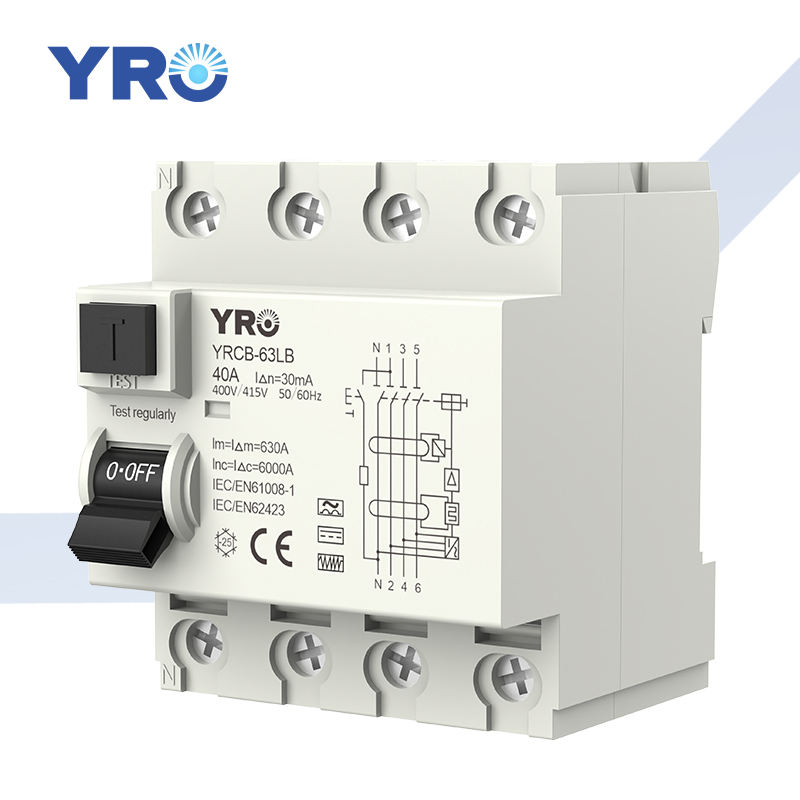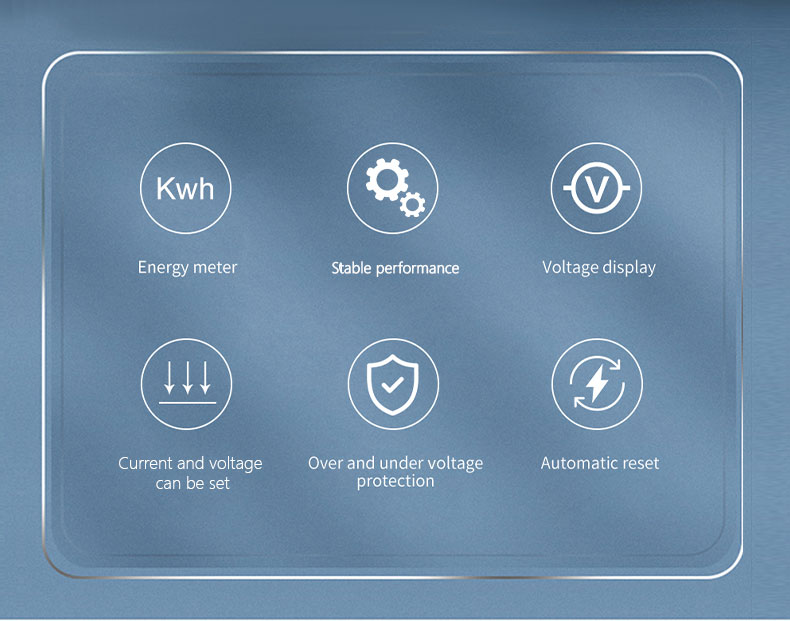What Is the Difference Between OUV and RCD?
In modern electrical installation, safety and stability are factors that need to be given key consideration. Among various protective devices, OUV (Overvoltage and undervoltage Protection Device) and RCD (Residual Current Protection Device) are often mentioned simultaneously. Although they look somewhat similar, there are obvious differences in their working principles, application scenarios and protection functions.
What Is an RCD?
A Residual Current Device is an electrical safety equipment primarily used to detect leakage current in circuits and promptly cut off the power supply, thereby preventing electric shock and electrical fire accidents. Its core function is to monitor leakage current (i.e., residual current) in the circuit and quickly disconnect the power supply when abnormalities are detected, ensuring personal and equipment safety.
The working principle of an RCD is based on current balance monitoring. Under normal conditions, the input current and output current in a circuit remain balanced. When leakage occurs, some current escapes through abnormal paths (such as the human body or the ground), causing a current imbalance. The RCD detects this current difference and immediately triggers the power cutoff mechanism.

What Are the Main Differences Between the Two Products?
The concept of overvoltage and undervoltage protectors was mentioned in the previous article "What Is an Over and Under Voltage Protector?" I have already mentioned it, so I won't repeat it here. The main difference between OUV and RCD lies in the objects they protect:
- RCD: It triggers protection by detecting the imbalance of current in the circuit, mainly used to prevent electric shock, electrical fires and equipment leakage problems, emphasizing personal safety and leakage protection.
- Overvoltage and undervoltage protector: It cuts off the power supply by monitoring abnormal voltage to protect equipment from voltage fluctuations, with a focus on the voltage stability of equipment and lines.
Other Differences
|
Feature |
OUV |
RCD |
|
Monitoring Object |
Voltage level of the power supply line. |
Current balance between live and neutral conductors. |
|
Type of Fault Addressed |
Voltage abnormalities: overvoltage or undervoltage from the grid. |
Ground leakage (ground fault), usually caused by insulation failure or human contact. |
|
Operation and Reset |
Usually has an automatic reset function after voltage normalizes. |
Usually requires manual reset after tripping to ensure fault inspection. |
|
Common Use Cases |
Whole-house power protection, protecting HVAC systems, industrial machinery, and sensitive electronic equipment. |
Power outlets in areas with high risk of electric shock, such as bathrooms, kitchens, workshops, and outdoor areas. |
|
Installation Location |
Scenarios with high requirements for voltage stability, such as distribution cabinets and industrial control equipment. |
Power outlets in areas with high risk of electric shock, such as bathrooms, kitchens, workshops, and outdoor areas. |
|
Monitoring |
Continuously monitors voltage levels. |
Instantly responds. |
How to Choose the Right Protection Based on Needs?
Choosing the right device entirely depends on the problem you want to prevent.
Select OUV
- The power grid voltage in your area is unstable or low voltage/power outages occur frequently.
- You need to protect your expensive equipment from damage caused by voltage spikes or drops.
- Your goal is to ensure the long service life and reliable operation of electrical equipment.

Select RCD
- Your main concern is to prevent electric shock to the human body.
- You need to protect high-humidity areas (bathrooms, kitchens) or places where equipment may have ground faults.
- If you want to reduce the risk of electrical fires caused by insulation aging and current leakage.
Conclusion
Although both Over/Under Voltage Protectors and Residual Current Devices can cut off the power supply, they are designed for different protection needs. These two devices play complementary roles in electrical systems.
By rationally selecting and installing these protective devices, more comprehensive protection can be provided for electrical systems, contributing to stable equipment operation and personnel safety. Using these protective devices in modern electrical systems can prevent equipment damage and accidents while also improving overall safety.




